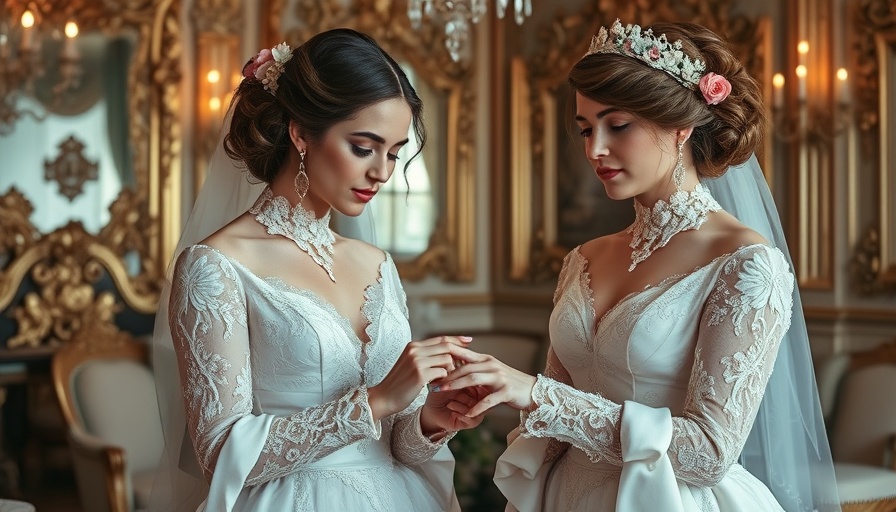
The Elegance of Gilded Age Wedding Dresses
As New Orleans residents, we often embrace the past while adding our unique twist to traditions. This is especially evident in our wedding celebrations. The Gilded Age, roughly spanning the late 1800s to the early 1900s, is a fascinating era that shaped many customs we still cherish today. One of the most prominent elements of this period was the wedding dress. While the white wedding dress, popularized by Queen Victoria in 1840, began to define bridal fashion, Gilded Age fashion was considerably less homogenous. Women of this era often wore their wedding dresses on multiple occasions, which not only made fashion statements but also echoed the economic realities of the time.
More Than Just a Dress: Wedding Traditions of the Gilded Age
The concept of a wedding dress was so much more than a color or fabric choice; it represented the bride's status and family background. Wealthy families spared no expense, choosing elaborately crafted gowns that reflected their social standing and elegance. However, it was not uncommon for brides both affluent and modest to wear their best dress, frequently repurposed for future events, including evenings at the opera, as seen in Martin Scorsese's film “The Age of Innocence.” This multifaceted approach to gown usage encourages an understanding of how varied the wedding experience could be based on individual circumstances.
Cultural Resonance in Contemporary New Orleans
Bringing this Gilded Age tradition into the modern New Orleans culture is both exciting and relevant. As engaged couples today plan their weddings, elements from the past can serve as inspiration for how they dress, celebrate, and create memorable experiences. Local artisans and designers often blend historical influences with contemporary styles, creating unique wedding dresses that are rooted in tradition yet speak to today’s tastes. For example, a bride might choose to customize an heirloom wedding dress or even a repurposed garment that carries sentimental value.
Why Understanding This Tradition Matters
This blend of the historical and modern is crucial for fostering a sense of connection among New Orleans' diverse community. Traditions evolve, but their core significance often remains intact. Understanding the nuances of how women in the Gilded Age approached their wedding dresses can lead to rich conversations and greater appreciation for today’s practices.
Reflecting on Rewearing Wedding Dresses
While not universally embraced today, the idea of re-wearing wedding dresses reflects a sustainable approach to fashion, especially pertinent in today’s culture, where many are becoming more conscious about their fashion choices. Imagine showcasing your wedding dress again, not only honoring the memory of your special day but also injecting a bit of nostalgia into every occasion you wear it—like an opera night out in the Crescent City!
In closing, the intersection of Gilded Age traditions and modern-day practices can be a source of inspiration for engaged couples planning their weddings in New Orleans. As our community continues to celebrate rich traditions, it's essential to keep exploring and understanding these beautiful customs.
If you're interested in diving deeper into how these traditions affect modern weddings in New Orleans, subscribe to MyNewOrleans for engaging lifestyle content!
 Add Row
Add Row  Add
Add 



Write A Comment